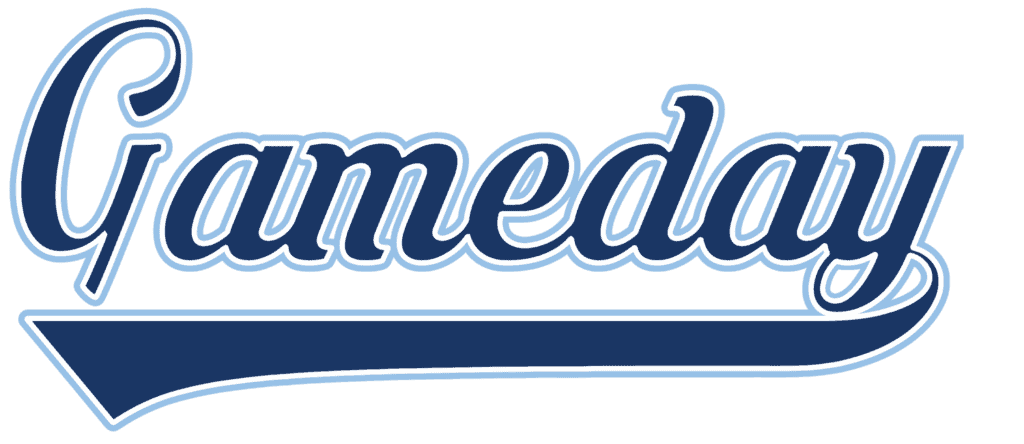Pitching Resources
5 Tips Every Pitcher Should Know
Watch as Coach Mike walks you through what he believes to be the top 5 most essential aspects to pitching that every pitcher should know. Whether you’re a youth player or a high school/collegiate player, there is always more room to grow and develop as a pitcher!
Hey, guys. Mike Coons, GM here at GameDay Baseball, here to give you five tips that every pitcher should know.
Number one: we’re going to talk about having a strong set position. So the set position is after we take our sign from the catcher, when we bring our hands and our feet together, we want to make sure that we have more weight on our back leg. Oftentimes, youth pitchers take their sign, come set, and they’ve got a 50/50 weight distribution. Meaning when they get into their balance point and they lift their leg, they have to rock backwards. We want to create a set position to where, when we come set, we have more weight on our back leg. Our back hip is over our back knee. That’s going to be over our foot. So now we’re in a position to where when we lift our leg, we can lift straight up without rocking backwards. So first tip of the day, let’s get into a strong set position.
Two: we’re going to talk about having a strong balance point. So people wonder, do I have too tall of a balance point? Do I have a balance point that’s tall enough? We want a balance point that’s going to get to around our waist. So if we get into our strong step position, we lift to our balance point. We want to get to a point where we’re right around our waist and we’re lifting from our core. So you want to lift tall enough to where you’re not rocking backwards, but also getting up around our waist. So that might be here or here, anywhere we can go to where our back of our spine is not moving backwards. So again, to reiterate, a strong balance point means we’re lifting up around our waist and we’re lifting from our core.
Okay, tip number three: we’re going to talk about creating force through the ground. So a lot of our velocity on our pitch is determined by how much force we’re creating down through the ground as we come out of our balance point. So we come into our strong set position, we get to our strong balance point. The next step is for our knee to go down before it goes out towards the catcher. When our knee goes down or our balance point goes down, we want to drive our weight into our back leg. Some coaches talk about sitting through the back leg or riding the back leg. What we ultimately want to create is force down through the ground. So we come set, we get into our balance point. As we start to descend down the mound, we want to get into the ground on our back foot. So if we’re left handed, it’s gonna be our left foot. If we’re right handed, it’s our right foot. But we’re creating force down through the ground as we descend down the mound.
Hey, guys. Tip number four: we’re going to talk about frontside extension. So after we come set, we get into our balance point. We start to go down the mound. We want to talk about getting some extension with our front side glove. Oftentimes young pitchers decide they want to point their elbow. This is a pretty forced movement. It’s not very athletic. We want to let our glove and our hand go towards the target. So this is what we call frontside extension. This is a long lever and our back arm, our throwing arm, is a short lever. So we create frontside extension and get a long lever. It’ll allow us to pull our back arm through the pitching mechanic. So frontside extension in our mechanics, we’re going downhill, we’re reaching towards our target and then ultimately we’re going to make our pitch.
Tip number five: we’re going to talk about where our glove needs to be when we finish our pitch. We talk about where we need to be in our strong set position, our strong balance point, driving and going downhill, driving our force to the ground. Front side extension of our glove. The last piece is where our glove goes when we make a pitch. Ultimately, we want to make a connection up around our armpit with our glove. We can think about pulling our glove to our chest or taking our chest to our glove. Either way, we’re looking for a connection here so that our arm can be out in front and make a quality pitch. If our glove goes anywhere other than there, our arm slot is going to change as well. So this connection is crucial in making sure that we’re going to be around the strike zone. So our glove at finish needs to come to our chest in order to be balanced through the mechanic.
If you wanna learn tips to be a great catcher in the in-field, follow our tips for a great in-field game. And if you are looking for some catching drills to tighten your game, IMG Academy has a plethora of pitching tips and drills to help you pitch with power and accuracy.

BaseBall Lessons
If you live on the north end of Denver, take your baseball skills to the next level at the old Hit Dingers Indoor Hitting Facility now Gameday in Arvada.

BaseBall Lessons
For anyone in the south Denver metro area, take your baseball skills to the next level at the 30,000 sq. ft. “Bubble” in Parker.

